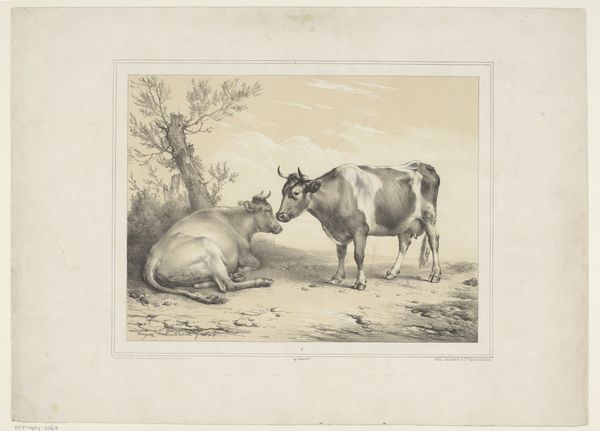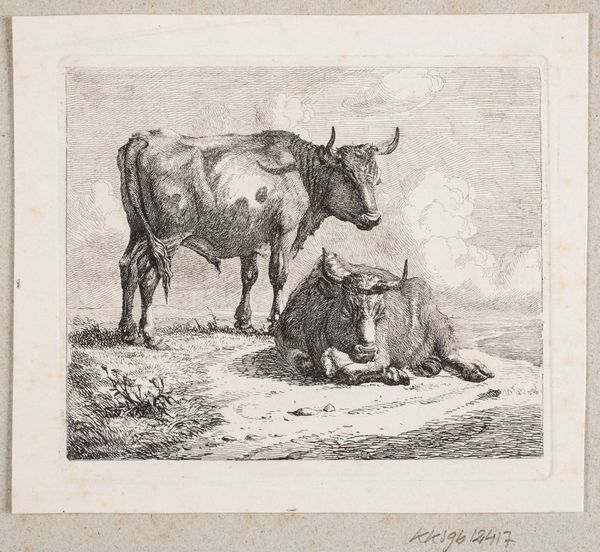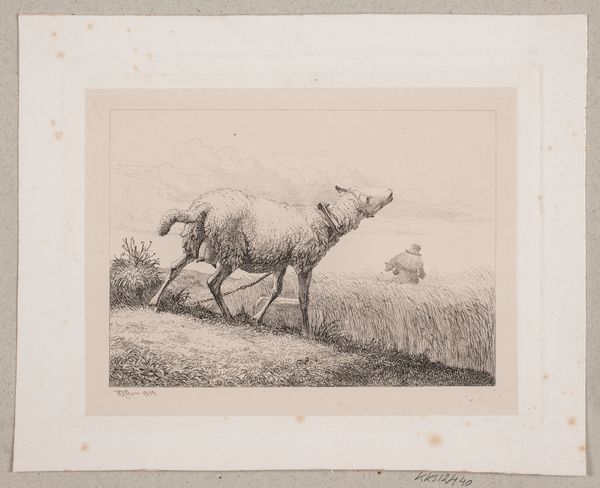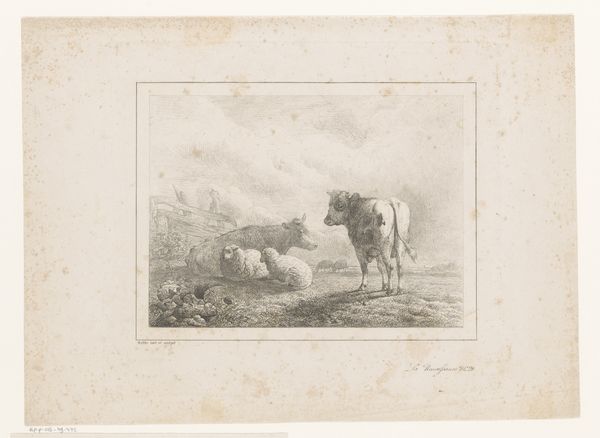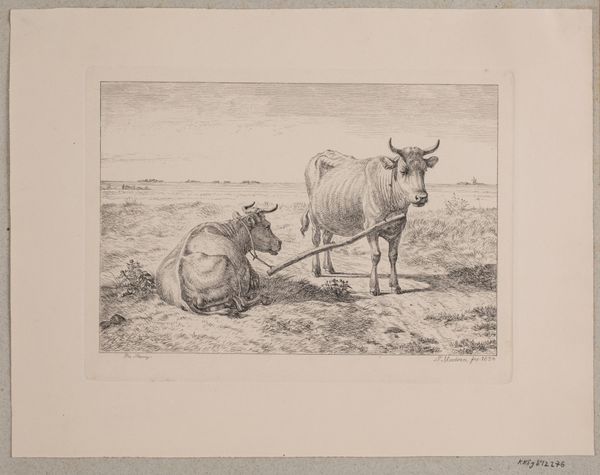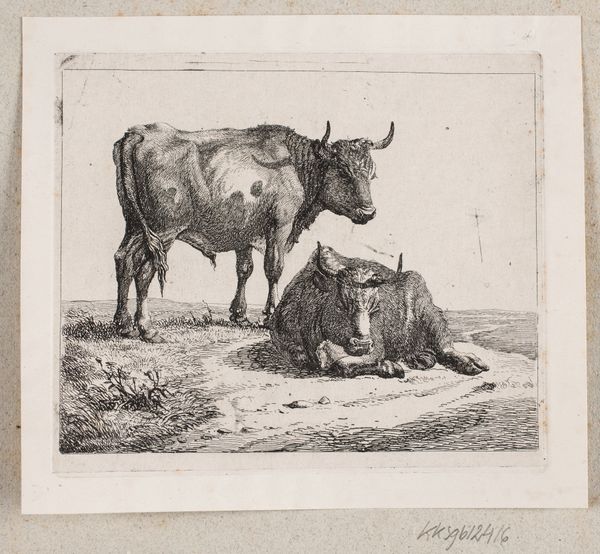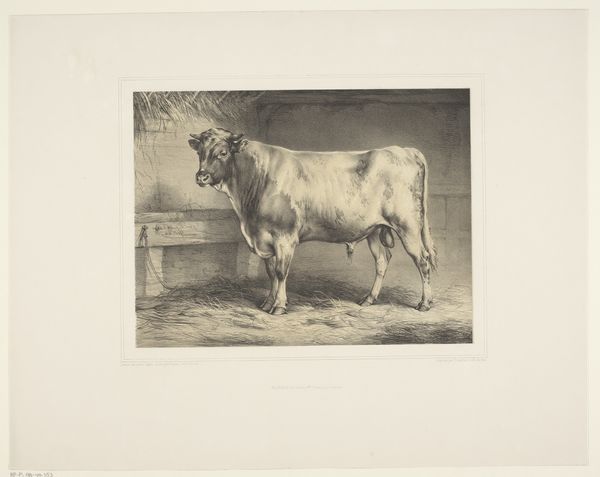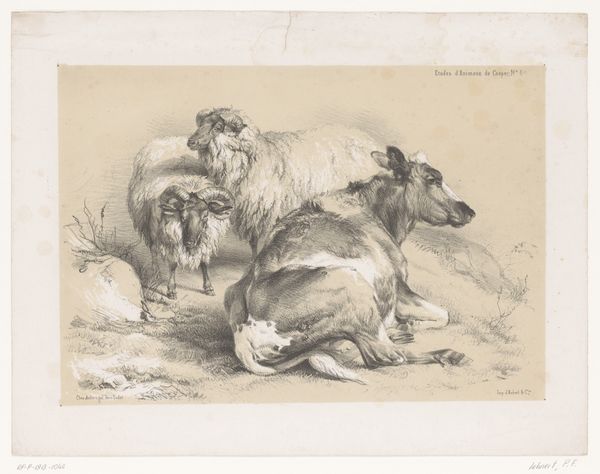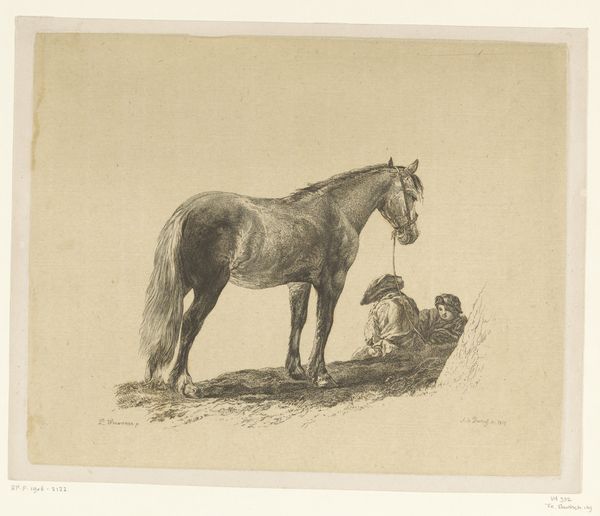
drawing, pencil, charcoal
#
drawing
#
animal
#
pencil sketch
#
landscape
#
charcoal drawing
#
pencil drawing
#
pencil
#
charcoal
#
watercolor
#
realism
Dimensions: height 495 mm, width 642 mm
Copyright: Rijks Museum: Open Domain
This lithograph of a resting donkey was made by Eugène Verboeckhoven, though the date is unknown. Here, the method is all about reproduction, not unique creation. Lithography allowed images to be copied and disseminated, an early form of mechanical reproduction. You could argue that the donkey itself is a kind of technology, an animal subjected to labor. The lithographic stone, a heavy slab of limestone, would have been carefully prepared, ground to a smooth surface, and then drawn upon with a greasy crayon. This is then treated with acid, so that only the drawn areas would hold ink. The printmaker would have been part of a small industry, churning out impressions for a hungry market. The image gives us pause to consider the relationship between labor, representation, and the rise of a capitalist mode of production. This was a world in which images could be reproduced endlessly, and animals as well as people, were put to work. Considering these factors, we can see how this artwork, made through industrial processes, offers a reflection on social and economic changes.
Comments
No comments
Be the first to comment and join the conversation on the ultimate creative platform.
